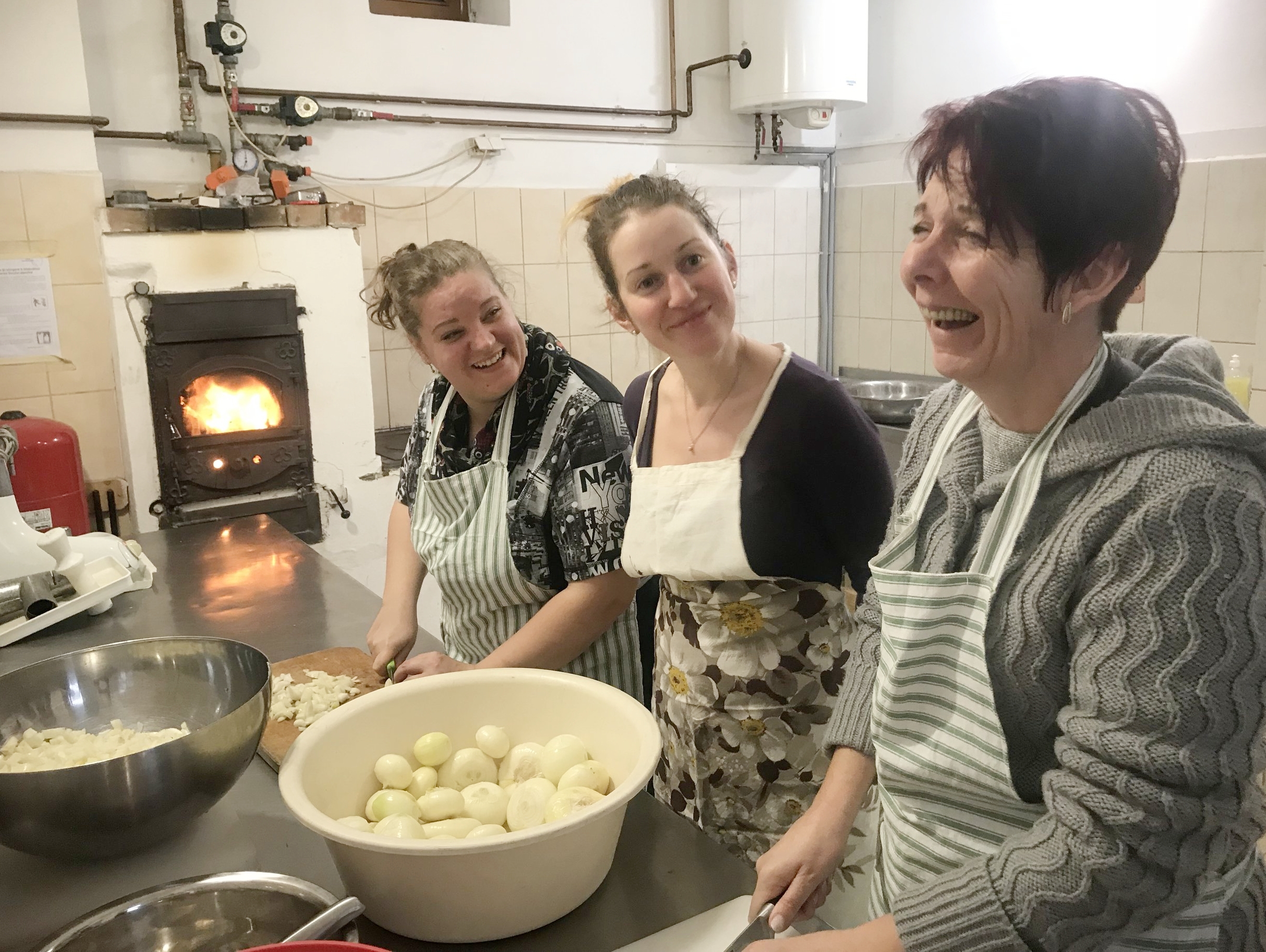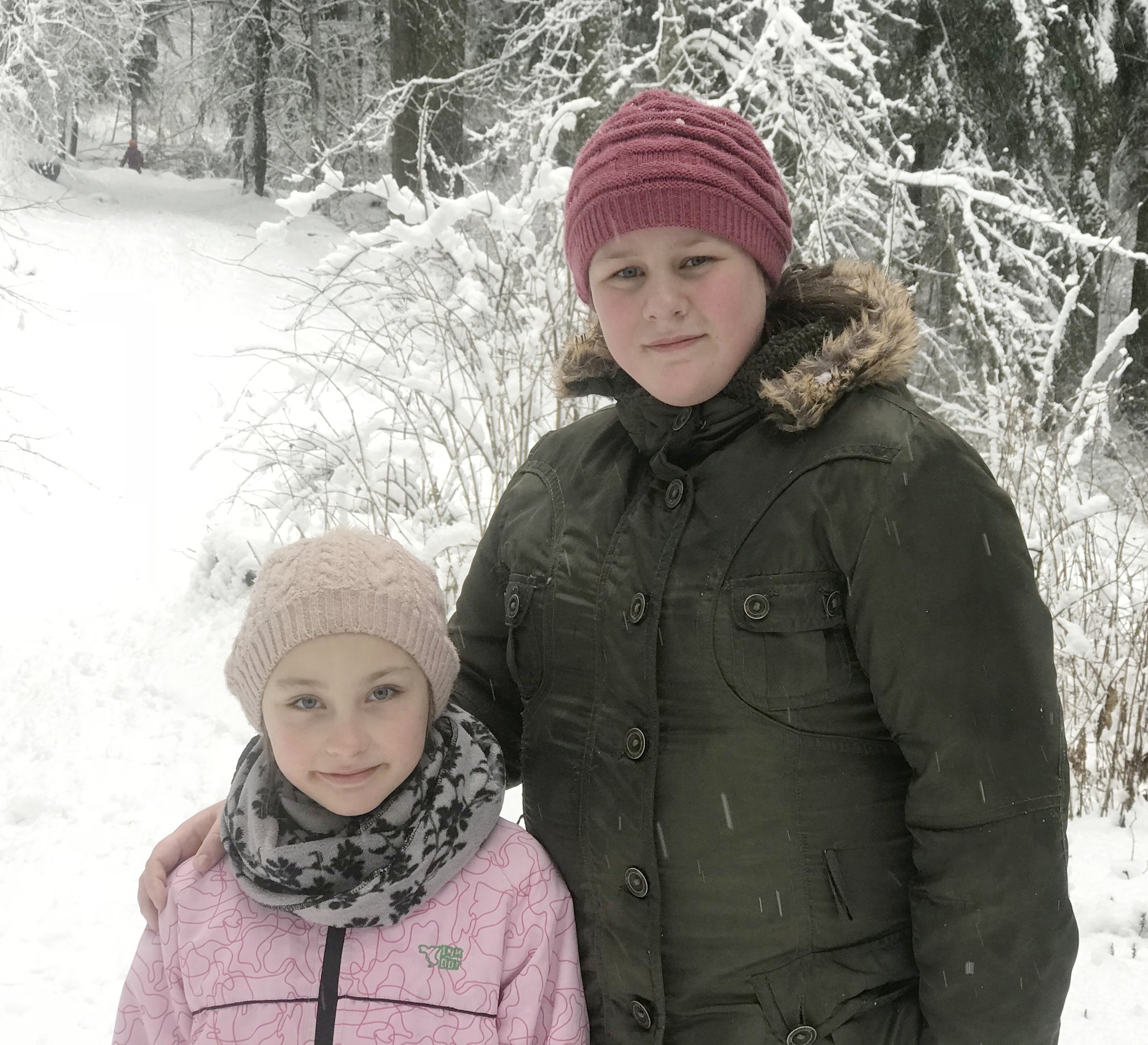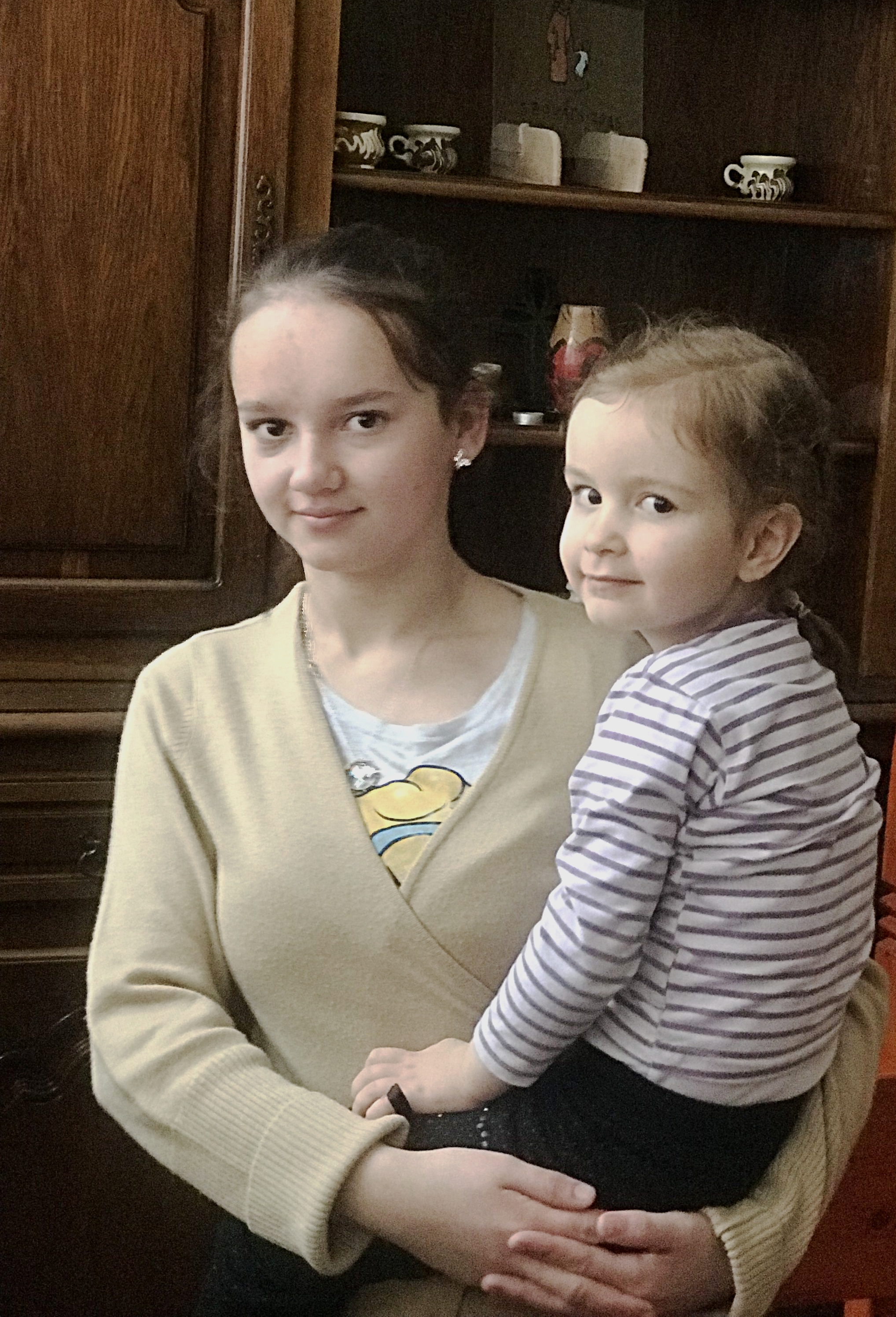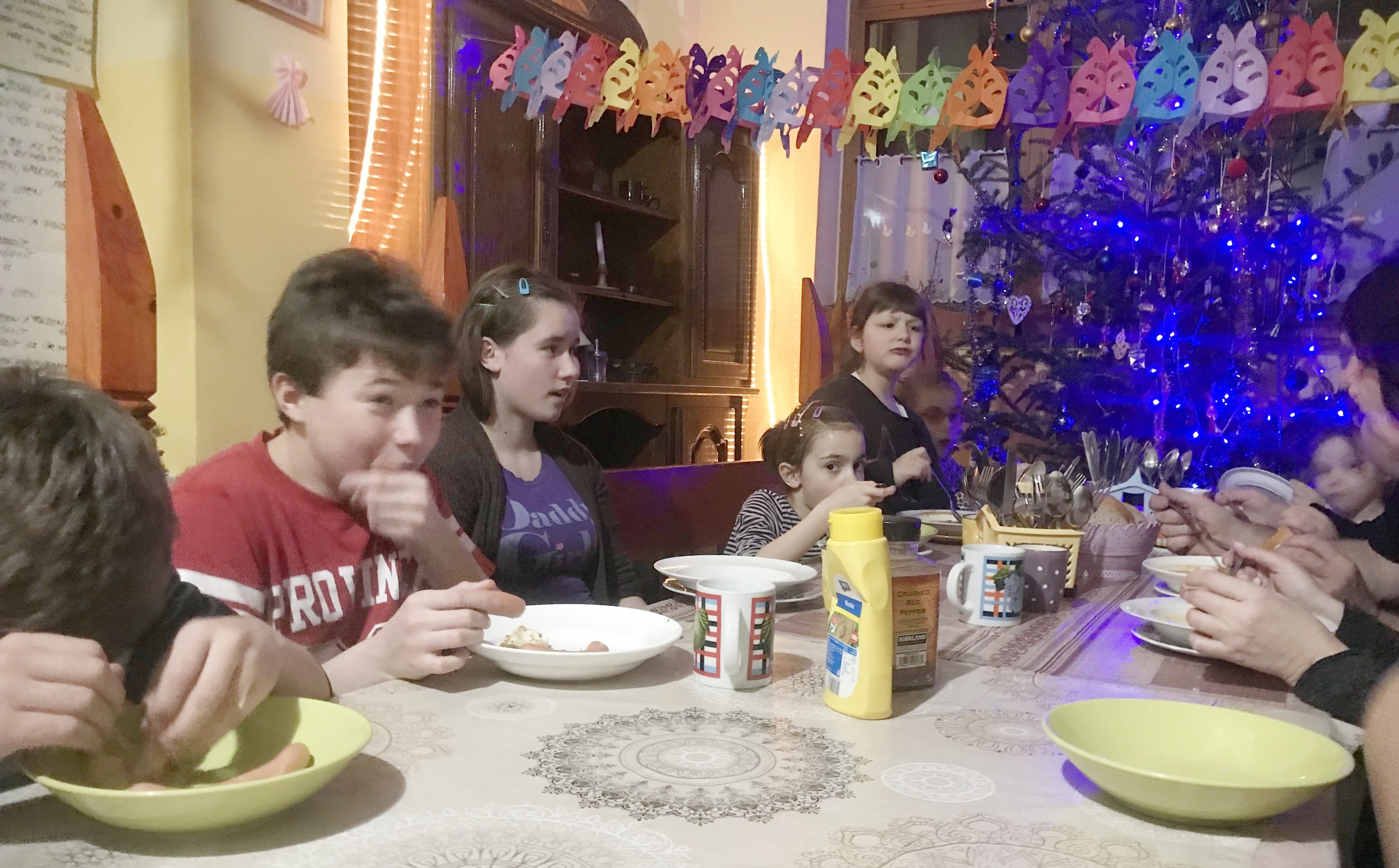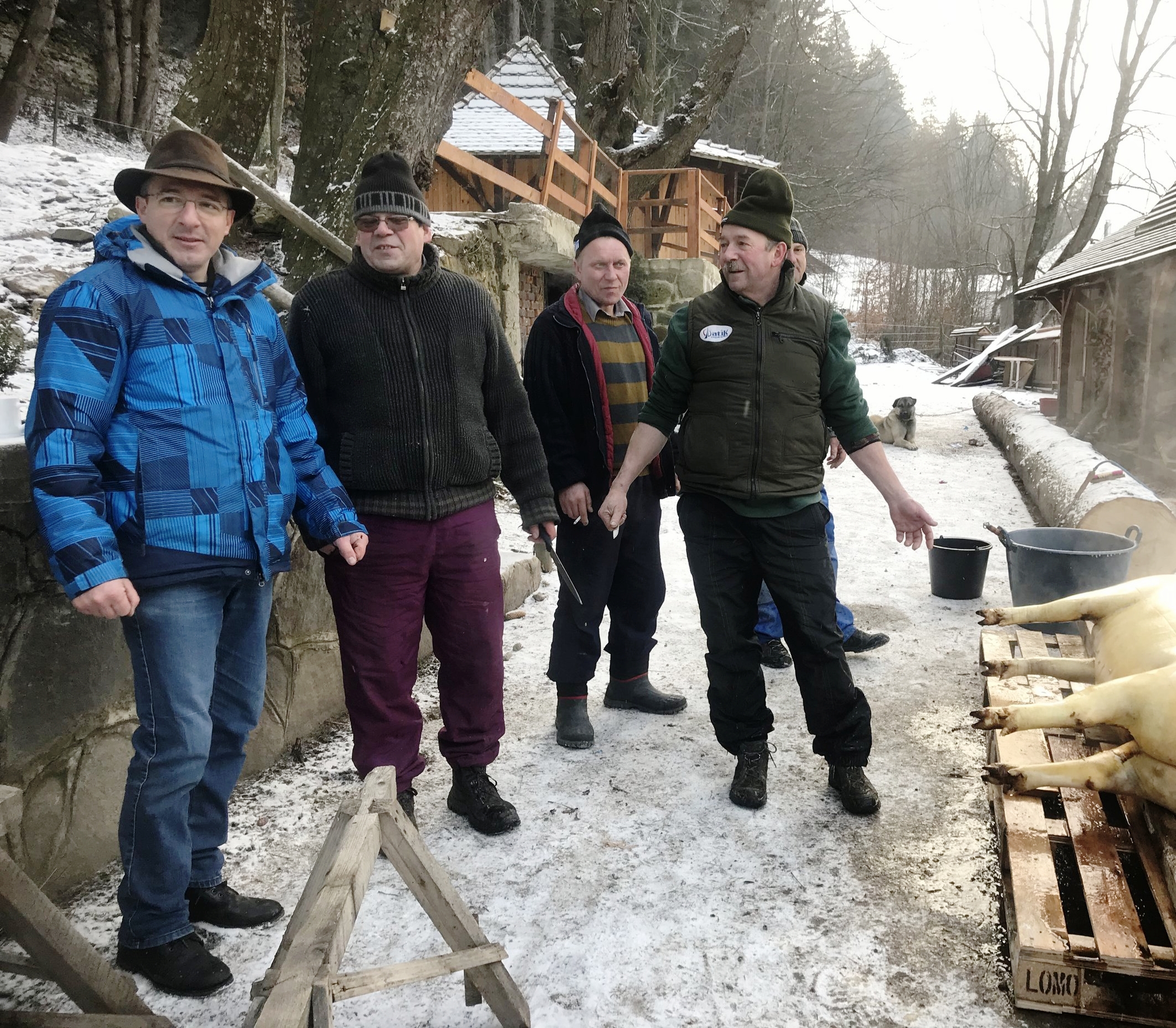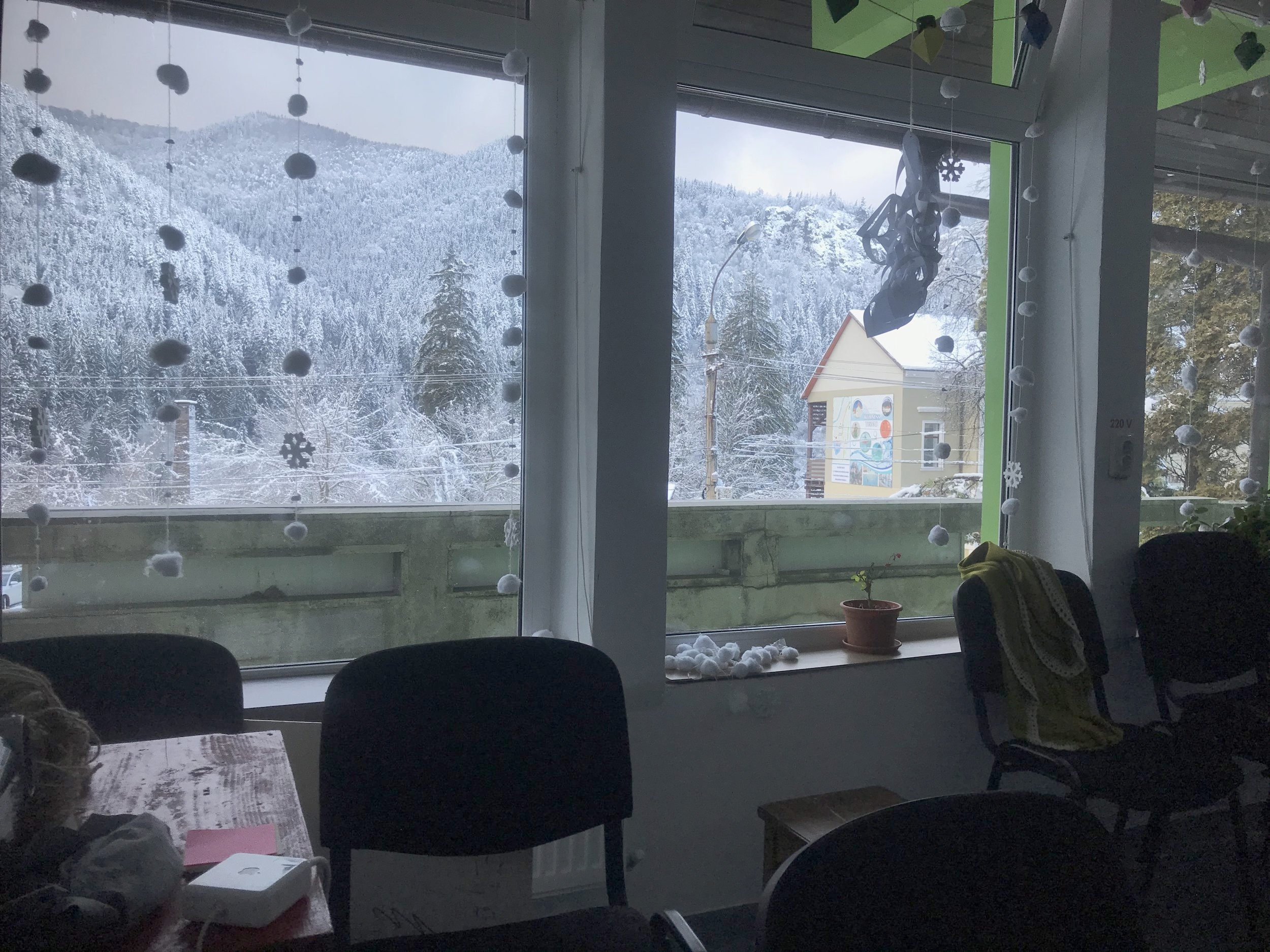There's Nothing For Dinner. Except Pork. But God Forbid You Eat It.
It happens from time to time that the kids don’t have a meal for dinner, just bread and margarine. One night it was due to food spoilage. A local restaurant had donated some leftover soup, but sadly it didn’t hold from lunch to dinner and had to be discarded.
I’ve never seen food boil without a heat source before, truly like a witches cauldron. The red oily liquid gave way to gaseous bubbles from deep within the pot as it sat on the counter. Someone had poured it down the floor drain to dispose of it and the whole kitchen smelled sour, not it a pleasing way like sauerkraut baking, but in a putrid kind of way. The smell reminded me of a stomach virus I once had.
On that night the kids had bread and margarine spread for dinner. Pete refers to it as plastic spread because it apparently has been processed in such a way that it is only one molecule away from plastic. A quick check with Snopes confirmed this and stated margarine doubles the risk for heart disease. I thought it was supposed to be better for heart health than butter.
I didn’t notice any of the kids complaining about only having bread and plastic spread for dinner. And I felt a little bit guilty on the walk to the Viktoria restaurant where I joined a few of the nevelo for a meal. But I’m learning not to stick my western privileged nose into everyone’s business. Why doesn’t the cook make some pasta or potatoes for them? There’s food in the pantry. Don’t they have to give them something for dinner? Aren’t there rules about this kind of stuff?
Yes, in the states, there’s certainly a ton of laws about policies for the care and feeding of foster children. Our schools have nutritional guidelines for lunches and a strict policy to throw away all leftover food. Due to liability of course. You wouldn’t want to allow employees to take food home or donate it to a food bank. Or even give bags of apples and carrots to nearby horse farms.
Regulations are a bit loose here. Laws alone don’t solve problems and policies are often folded over and neatly tucked away in a file. They certainly don't have policies on leftover food. I suppose it's a bit ironic that the donated soup had spoiled. But it did feed all the kids at least one meal without any gastric consequences that I'm aware of.
I thought of the hungry kids as I cut into my breaded chicken cutlet. As the warmth of the food crept down my esophagus and my stomach happily anticipated the protein, I thought of them, how their tummies were likely cold and gurgling.
But I’ve realized something from the three trips I’ve done this year; I am not meant to solve the world’s problems. I’m not here to try and change any systems in place. What I am here to do, is bear witness. To be an observer. To ponder my thoughts on right and wrong and where my values settle within the very broad range between those two extremes.
I admit I should have written a warning on a video I posted in a Face Book group of female international travelers. The video showed a dead pig. And if you only saw that, yes, why the hell would I post that?
But there is a centuries old tradition of the Szekely Hungarians to slaughter a pig, typically before Christmas, to have for food throughout the year for a family. It’s a disappearing tradition due to the population moving closer into the larger cities for work. It’s a rare occasion that a visitor would observe this custom.
The energy in the kitchen was palpable on Tuesday. I was still sleepy, just going downstairs to microwave some water for tea when I noticed Eva, Andi and Briggita standing in a row and chopping piles of onions. They wore thin cotton aprons with faded blue pinstripes and folk music filled the kitchen. A red-cheeked young nevelo, Dora, said I must come see the pig outside.
“No, no, that’s okay – I don’t want to see it.” I politely declined.
“Oh, but you must. This is a once in a time occasion. A tradition.” She pleaded. Her smile told me this was something special.
Pete had mentioned the night before that it was possible I’d get to see the tradition of slaughtering the pig. That was an absolute no in my mind. There was no way I wanted to witness that.
“No, I would not want to see either, but the pig is dead. You don’t know when you might see this.” Dora smiled. “Come. Come with me.”
With everyone’s excitement I found myself climbing the stairs behind Dora, a little bit apprehensive of what I’d see. But I'd seen plenty of roasted pigs on stakes in the Dominican Republic and when I lived in LA, I even arranged for a traditionally prepared lechon at a luau party years ago.
The first thing I noticed was Betyar, the dog with a head twice the size of a humans, looking on with an intense stillness from his chained post a mere forty feet away from protein he badly needed.
Tibi and a few other men tended to the dead pig, with care. They were celebratory, smiling and sipping back small shots of palinka and letting out satisfied sighs of frosty air. All four of them wore caps and warm earth tone coats but no gloves. Two of the men poured hot water over the pig’s body while others smoothed over its skin with knives to remove the remaining charred bristles. The pig’s body is typically nestled in hay and the fire burns off the course hair. Every part of the pig is used, including the skin.
That pig will provide food for one hundred people for about two months, so about eighty kids. On Sunday evenings it’s typical for the kids to have cereal or bread for dinner with hot chocolate made from fresh cow's milk. Having cereal for dinner for most of us is a choice. I’ve had it on occasion when I’m not that hungry or too lazy to make something. But it’s not a choice for the kids in the Franciscan House.
My Face Book post got quite a few angry responses from people who I assume were vegans and vegetarians. But a few vegetarians defended the choice to eat meat and others pointed out that hungry kids living in an orphanage would be fed while others wrote about witnessing similar cultural rituals in other countries.
One woman claimed she’d rather that we kill people and eat them. Another said I was seeking attention by posting the video. Another said that the people should be fed what the animal ate, that it was wasteful to feed the pig. Another woman pointed out that the pig ate hay and food scraps – who would want to eat that? Some bacon lovers taunted the vegetarians, others had no patience at all for the vegans. It was fascinating to read the varied and passionate responses.
It made me think about my own views on eating meat. I’d been feeling like a bit of a hypocrite because I’m an animal lover and I do eat meat. However, watching the men prepare the pig for butchering and knowing that absolutely every part of the animal would be used seemed like a more civilized farming practice than the industrialized and often inhumane methods we have in the United States.
I would rather see an animal humanely treated during its lifetime before being killed for meat. This pig came from a small farm, seemed to be pretty well fed and wasn’t pumped full of hormones and antibiotics. It wasn’t enclosed in a pen with no space to move and wasn’t hoisted onto a conveyor belt with hundreds of others to be killed.
Some industrialized dairy farms have surgically altered cows with cannulas, giving workers direct access to the cow’s stomach by hand to remove food and examine the digestion process. That’s certainly not a practice I’d support.
I can’t ever imagine myself killing a farm animal to eat, and I wouldn’t want to bear witness to the act. And while the animal lover part of me empathizes with animal-rights activists – the practical part, who sees these kids eating bread for dinner completely supports the killing of a pig that will supply food for them for two months.
My heart wants to save the life of the small black dog I saw in horrible condition, shaking, fur matted and covered in feces closed up in a sixty square foot outdoor shed than spare the life of the pig that lived well and will nourish growing kids.
And don't worry - I won't share the video. But there is a picture of the dead pig below.
Keep up with the next adventure . . . . .
This Ted Talk on bioprinting leather and even meat is quite fascinating. It offers even more to ponder.

